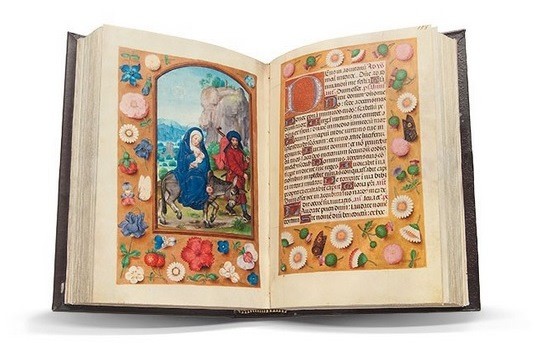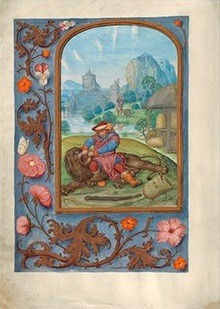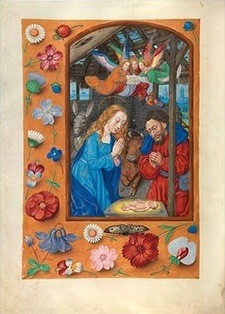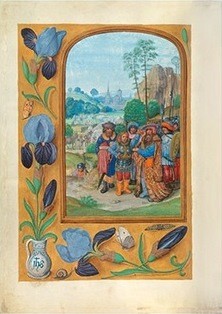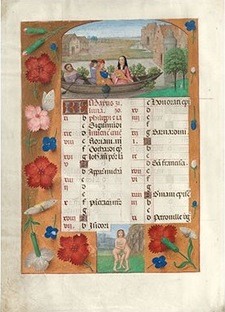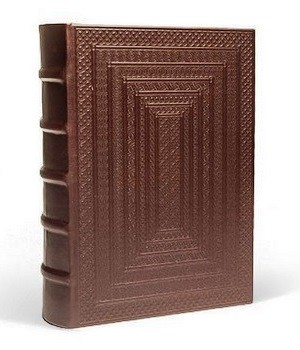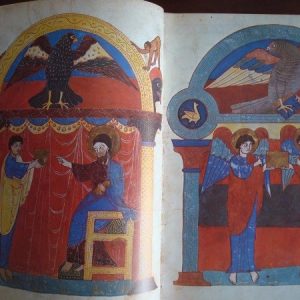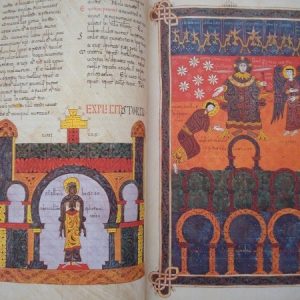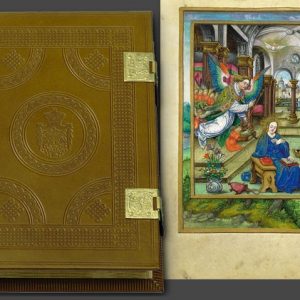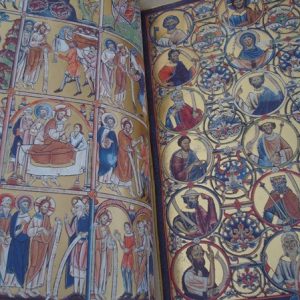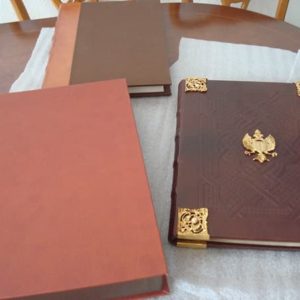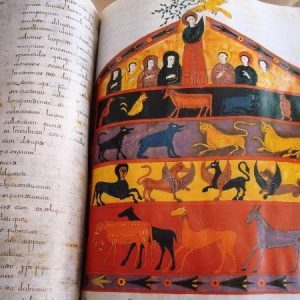Description
Facsimile edition of the manuscript Latin Vatican 3770 of the Vatican Apostolic Library, one of his most remarkable books of prayers.
Of itself is a unique book. First because of its size. There is no other book of sentences, or if you like, Book of Hours, of the same volume: 231 folios (462 pages) with the two folios of guard at the beginning and at the end.
But above all by its content. In addition to proposing the entire collection of the biblical book of the Psalms, it contains the four classic evangelical readings (John, Matthew, Luke, Mark, in that order), the canonical office of the Virgin, the Mass of the Virgin and a unique series Of prayers always addressed to the Virgin, until now, as far as we know, never assembled in a single manuscript for the use of the faithful; Plus two sets of complete litanies of saints, to close the series with the seven penitential psalms with the consequent sentences. By some aspects of its content it comes close to the usual Books of Hours, but it is, in reality, by its true content, entirely unique.
No doubt what distinguishes this facsimile and confers its special and exclusive value is the series of miniatures of high artistic level that decorate it, be it in the same Psalter, or in the Office of the Virgin, be distributed in the book as an introduction to Other texts. Most of these miniatures, first of all the eight that decorate the Book of Psalms, with the story of David, seemingly have no parallel in any other book of the same type.
The facsimile edition is accompanied by a commentary by Cardinal Jorge Mejia, Librarian and Archivist emeritus of the Holy See, for a more complete explanation and explanation of its various parts and illustrations.
The Latin Vat. 3770 is distinguished at first sight by two things: its remarkable extension: 232 folios (464 pages) and the precious page thumbnails that decorate it. More carefully, its precise content, also peculiar and certainly alien to the typical Book of Hours.
The folios of this manuscript are 14.3 x 20 cm. And the written (and / or decorated) part 12 x 12; That is, practically a square. The written text usually occupies 21 lines, prepared in each case by red ink. As it is characteristic of this type of manuscripts, the folios usually have, around the written (or illustrated) part one (the majority), two or three and in some case four, marginal bands almost always in gold background, illustrated by flowers , Some fruit and sometimes also small animals, insects (the preference goes to the butterflies) and some small bird. In a manuscript like the present, this undoubtedly favors the reading, making almost of each folio a small work of art.
Writing is so identical with itself, that presupposes, if not a single scribe, that it would seem impossible, given the extension, at least a group or school of scribes, strictly consistent with themselves. The initials abound, beautiful in design, identical from the beginning to the end of the manuscript.
It calls at last attention, the profusion of whole-page miniatures, especially in the Psalter, eight in all, one of the remarkable qualities of the manuscript reproduced.
There are three series of miniatures, two full page and another series that takes the full extent of the folio, limited the latter to the headings of the months of the year in the Calendar.
The activities of each month are drawn and illuminated with care and more than one is especially artistic. For example, the description of the boat ride in the month of May with a wide landscape behind. Or the beautiful scene of domestic life in a typically Dutch middle class house for the month of December.
A series also notable, and among the best in the book, are those of the four evangelists, carefully framed at the beginning of the four respective passages, by space of about eleven lines. Each of them, it may be said, is a small work of art, already in the tradition of the great Flemish or Dutch artists of the second half of the fifteenth century.
Each of these miniatures is itself a small work of art and certainly the key to identify, as far as possible, the main artist author of the book’s decoration.
All of which means that the workshop entrusted with the copy and illustration of the manuscript, as often happens, has not found or did not have a single artist, but in any case for the continuous floral decoration, itself admirable, but Which has turned to several artists of different quality and level.
The facsimile is bound in leather. The binding is in brown goat skin and is stamped dry on both sides of the cover and on the back, with the same motifs as the original one. Like the original volume, the facsimile features the golden corners. Format 14.3 x 20 cm. 464 pages.
The volume of study or supplementary volume is bound in Italian silk, richly illustrated on the cover and with heavily decorated guards. Realized by Cardinal Jorge Mejía, Archivist and Librarian Emeritus of the Holy Roman Church. Texts in Spanish.
This facsimile edition of the original sixteenth century codex was made in 2014.
Shipping costs for the account of the buyer, according to order and destination. Ask us without any questions, as well as any other facsimile or article you are looking for.




